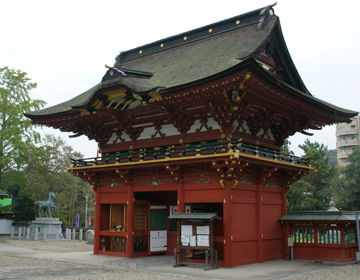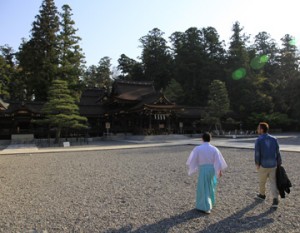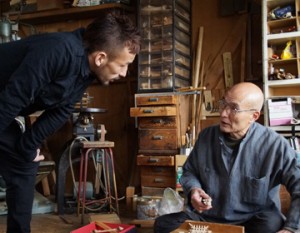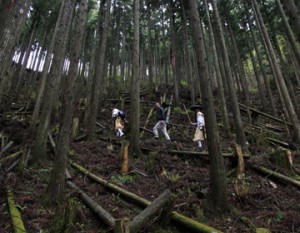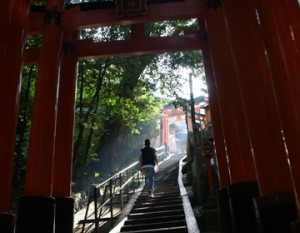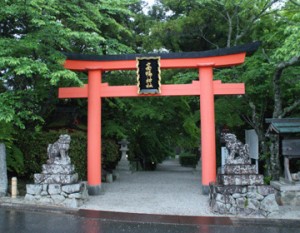Leaving many legends
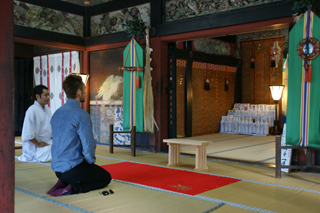
”Iga Hachimangu” enshrines the family god of Matsudaira, which is an ancestral family of Tokugawa. It is a Shinto shrine founded by the 4th lord of the Matsudaira family, Chikatada, in the 2nd year of Bunmei (1470), 72 years before the birth of Ieyasu Tokugawa.
Since its foundation, it has been the object of worship by all the lords of the family, even during time of war. Ieyasu also expressed deep faith, and it was customary for him to pay a visit before going to battle. There are many legends that have been passed down concerning the shrine. At the Battle of Okehazama, when General Imagawa lost and retreated, a white deer, a messenger to the god of Hachimangu, was said to have appeared at Yahagi River and lead Ieyasu safely back to his domain in Okazaki. Also at the Battle of Sekigahara and the Siege of Osaka, the main building of the shrine rumbled and shook, and the red gates were said to have moved from its original place.
The ”Gongen zukuri” style of the main shrine building
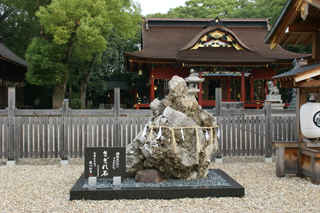
The third Shogun of Tokugawa, Iemitsu, deified his grandfather Ieyasu Tokugawa as Tosho Daigongen and enshrined him together with the family god of Iga Hachimangu. Thus Iga Hachimangu became one of the three Toshogu (together with Nikko and Kunozan), the shrines deifying the Shogun as gods. Iemitsu expanded the main shrine building originally built by Ieyasu in the ”Gongen zukuri” style, which is the same as Nikko Toshogu. The brilliantly colored shrine building, together with the Zuishinmon Gate, and the stone bridge over the sacred pond, were designated National Treasures in the 8th year of Meiji (1933), and still remain unchanged from ancient times.



